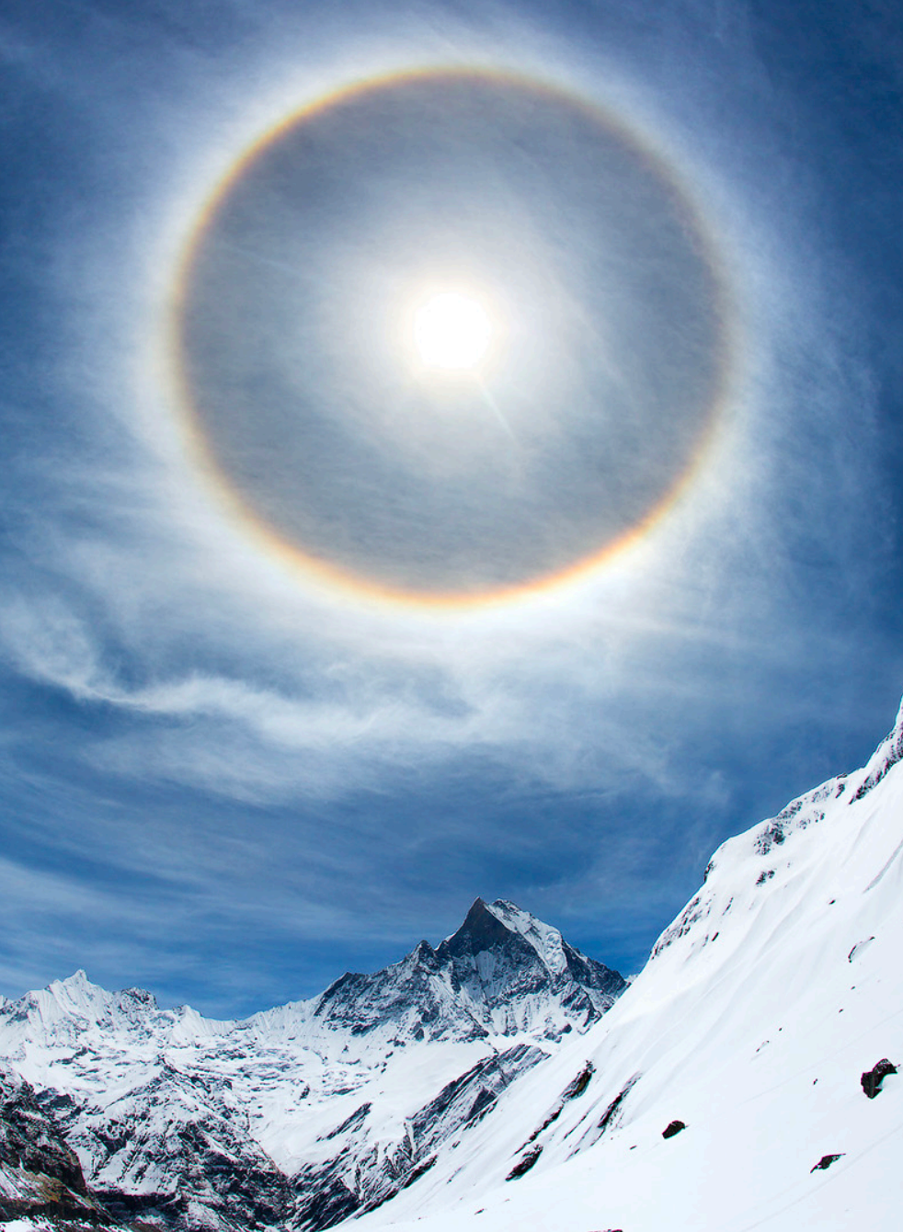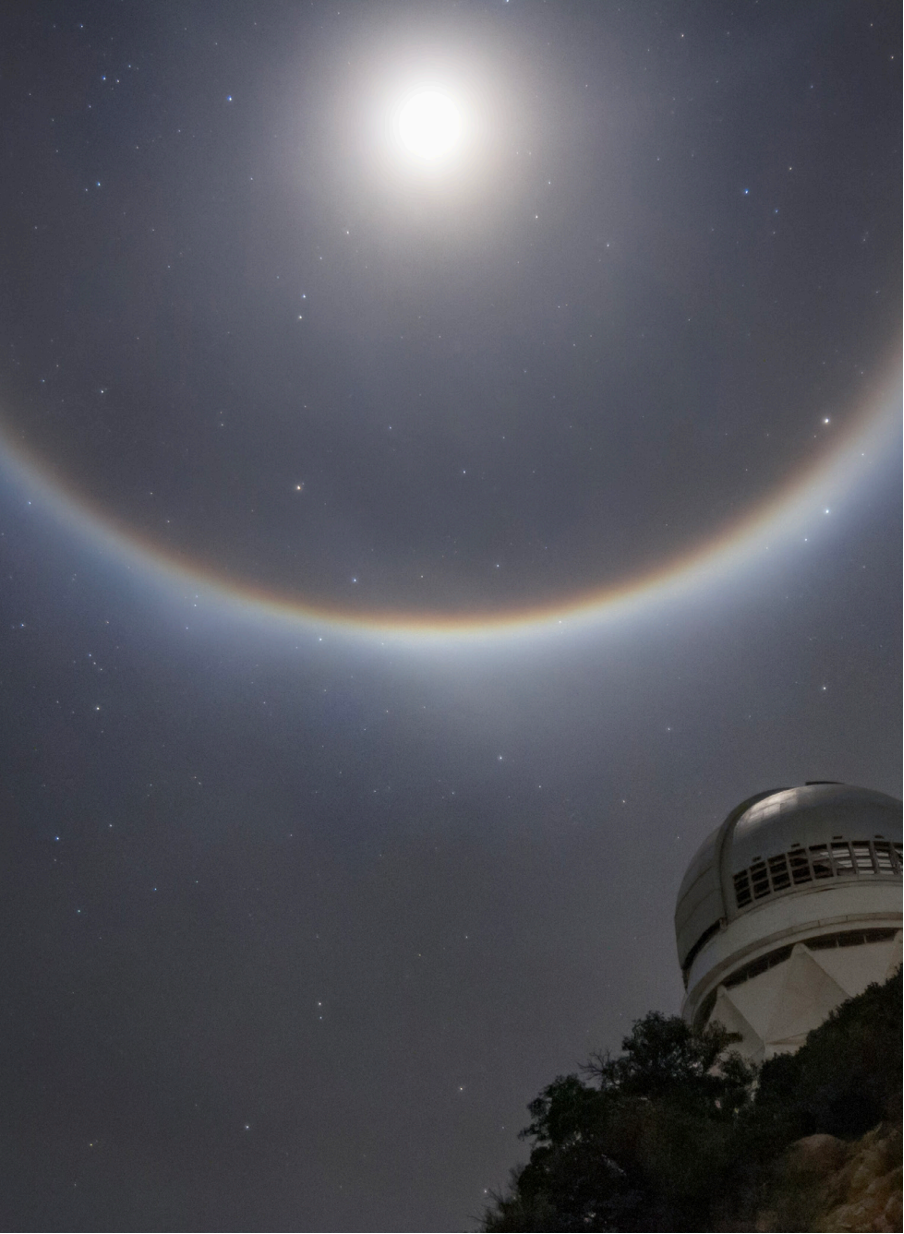The magic of winter halos
Exploring winter halos: a scientific peek into the optical illusion seen lighting up UK skies.

A rare ‘winter halo’ was spotted on Saturday evening up and down the UK.
It is believed this optical illusion occurs when sunlight or moonlight is refracted by ice crystals high in the atmosphere.
This causes a bright luminous ring to appear around the Sun or Moon.
If you stretch out your arm and look at the halo in the sky, its radius will appear to be roughly the length of your outstretched hand.
The rings are called 22° halos, because the angle formed between the observer’s eye and the edge of the ring is 22°.
‘In effect, these suspended or falling flecks of ice mean the atmosphere is transformed into a giant lens causing arcs and halos to appear around the Sun or Moon depending on whether the effect is happening during the night or day respectively’, says Space.com.
Winter halos are a common occurrence during a full moon, when the moonlight is bright enough to illuminate the ice crystals and create the halo effect.

Do winter halos predict the weather?
According to folklore, the appearance of lunar halos foreshadows rainfall, especially during winter.
This belief stems from the fact that the formation of halos This belief stems from the fact that the formation of halos is linked to the presence of high-altitude cirrus clouds.
Cirrus clouds often indicate rainfall within the next 24 hours.
The atmospheric optical illusions they create became ingrained in weather lore, serving as an early empirical method for predicting weather before the establishment of meteorology.
Although these beliefs have deep roots in cultural traditions, there is no scientific evidence to substantiate the notion that lunar halos themselves directly induce weather changes, or forecast specific events.








